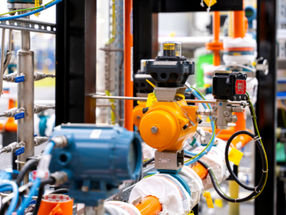Acetic acid market benefits from surge in Asian chemical industry and technological innovations
Industrial growth in China and technological progress is driving the global chemicals industry, states a new report by industry experts GBI Research
Advertisement
The new report studies acetic acid, an important chemical with applications in several downstream industries like textiles, food processing and several other industrial chemical processes. Acetic acid prices are mainly driven by the prices of feedstock and methanol and demand for its derivatives, including Vinyl Acetate Monomer (VAM) which is used in paints, adhesives and coatings, and Purified Terephthalic Acid (PTA) which is mainly used in the manufacture of polyester and fibers, as well as acetic anhydride and ethyl acetate. An increasing trend in acetate esters being used mainly as solvents for inks, paints and coatings has also been observed in the last few years.
On the technological front, emerging technologies are offering promising opportunities for growth within the chemicals industry. Manufacturers of acetic acid are increasingly updating their processes from older technologies such as the methanol carbonylation process. Next-generation technologies like BP’s Cativa and Celanese’s AO-plus (Acid Optimisation Plus) boast significant savings in variable costs, lower capital costs for the construction of new plants, increased capacity, enhanced production efficiency, reduced energy consumption by approximately 30%, and lower operating costs. An increasing trend towards the adoption of these new technologies is likely to be seen across the world in the coming years, which will drive the global growth of the acetic acid market.
Asia accounted for more than 60% of global acetic acid demand in 2011, with China accounting for almost 40% of that. With new capacity coming online in the forecast period, China should continue to be the engine of global acetic acid growth over the next few years, as the emerging economy’s giant population dictates its huge consumption potential and tremendous growth opportunities, while developed nations such as Japan and Germany have seen domestic demand for acetic acid largely stabilize. Asia-Pacific will continue its growth momentum in the coming years, and stands to be the global growth engine for the acetic acid market.
The US had the second-largest acetic acid demand share after China in 2011, and a complete recovery in the US economy will boost the global growth of acetic acid in the future.
The global demand for acetic acid has been steadily increasing over the past decade, from 6,112,418 tons in 2000 to 10,246,522 tons in 2011, and is expected to grow at a Compound Annual Growth Rate (CAGR) of 4.7% in future years to reach 15,539,000 tons in 2020.






























































